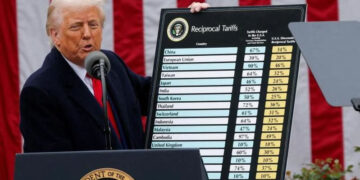By Oyintari Ben
As a result of Saudi Arabia’s commitment to reduce production by an additional one million barrels per day (bpd) beginning in July, in order to counteract macroeconomic headwinds that have depressed markets, oil prices have increased by more than $1 per barrel.
As of 09:00 GMT on Monday, Brent oil futures LCOc1 were up $1.72, or 2.3 per cent, at $77.85 a barrel after reaching a session high of $78.73.
Following an intraday high of $75.06, US West Texas Intermediate crude CLc1 increased $1.72, or 2.4 per cent, to reach $73.46.
After the Saudi oil ministry said that the country’s output would decrease to 9 million bpd in July from roughly 10 million bpd in May, both contracts saw more than 2% gains on Friday. The drop is Saudi Arabia’s largest in recent years.
The voluntary cut comes on top of a larger agreement by the Organisation of the Petroleum Exporting Countries (OPEC) and allies, including Russia, to limit supply until 2024 in an effort to support falling oil prices.
About 40% of the world’s crude is produced by OPEC+, which has reduced its output target by 3.66 million bpd, or 3.6 per cent of total demand. Suvro Sarkar, head of the energy sector team at DBS Bank, stated that Saudi
Arabia is more focused than most other members on maintaining oil prices over $80 per barrel, which is necessary for balancing its fiscal budget for the year.
Saudi Arabia will likely keep doing whatever it takes to keep oil prices high and take thoughtful, proactive measures to guarantee that any macro worries that can hinder demand are eliminated.


























![Processing equipment operates at the Natural Gas Liquids facility at Saudi Aramco's Shaybah oilfield in the Rub' al-Khali desert in Shaybah, Saudi Arabia [File: Simon Dawson/Bloomberg]](https://www.theheritagetimes.com/wp-content/uploads/2023/06/a4d8694d-b720-4619-89fe-daff89662821-750x375.jpg)









